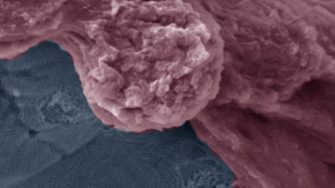
Porous materials are omnipresent and some of the unseemingly solid materials in nature and around us are porous at sub-micron scale. Nature creates some of the most elegant and functional porous materials like bones, diatom silica shells and opals.
The laboratory for advanced porous nano-biomaterials is inspired by natural porous materials and focuses on development of advanced porous materials and their composites for medical applications. We utilise unique materials properties of a range of different porous materials for creating advanced drug delivery platforms, surfaces and scaffolds for regenerative medicine, and sensing tools that exploit unique optical and electrical properties of our porous materials.
Our research has a broader focus in development of new porous materials and composites, and their use in various medical applications. Some of the main research focuses of the group are:
- Porous materials-based imaging and drug delivery systems for efficient diagnosis and targeted therapy.
- Understanding interaction of porous materials with biological materials (e.g. cells, proteins, etc.) for medical devices applications.
- Porous materials/polymer composite scaffolds and implants for tissue engineering.
- Porous photonic crystals-based point-of-care sensors for diagnostics and environmental applications.
The group brings together a specialised research expertise to this field with a range of highly sophisticated porous materials fabrication and biological testing methods. Some of the key techniques, tools and facilities include:
- Electrochemical anodisation set-up for preparation of porous anodic alumina, porous silicon and porous titanium dioxide.
- Sol-gel mesoporous silica materials fabrication with controlled structural and morphological features.
- Materials surface chemical modification and composite synthesis facility.
- 3D printers (FFF and DLP 3D printers) for biofabication and device prototyping.
- Miniature optical and electrochemical measurement tools for sensing application.
- Analytical testing facility (HPLC and spectrophotometers) for qualitative and quantitative analysis of our porous materials and payloads.
- Highly specialised in-vitro cell culture models for understanding cytocompatibility and efficacy of our porous materials.
Cover art
Research directions
- Drug delivery and bioimaging
- Porous silicon particles and their composite with two different Eudragit® enteric polymer
Top: Size and structure of chemically and physically modified indocyanine green (ICG) mesoporous silica nanoparticles (MSNs). Bottom: Photoacoustic imaging using ICG loaded MSNs and corresponding controls.
Scaffolds and tissue engineering
Top: Porous silicon particles polymeric nanofibers for tissue engineering and regenerative medicine applications. Bottom: Cells grown on a (a-c) polymer film and (b-d) directionally aligned porous silicon/polymer nanofibers that show ability to guide cellular structure for desired regenerative outcome.
3D printed titanium implant surface with porous titanium dioxide layer on top shown on the right.
Sensing
Porous silicon photonic crystal sensor embedded into a needleless IV catheter hub for online sterilisation sensing. Top: process of sensor embedding and bottom shows sensing performance of the two types of sensors.

